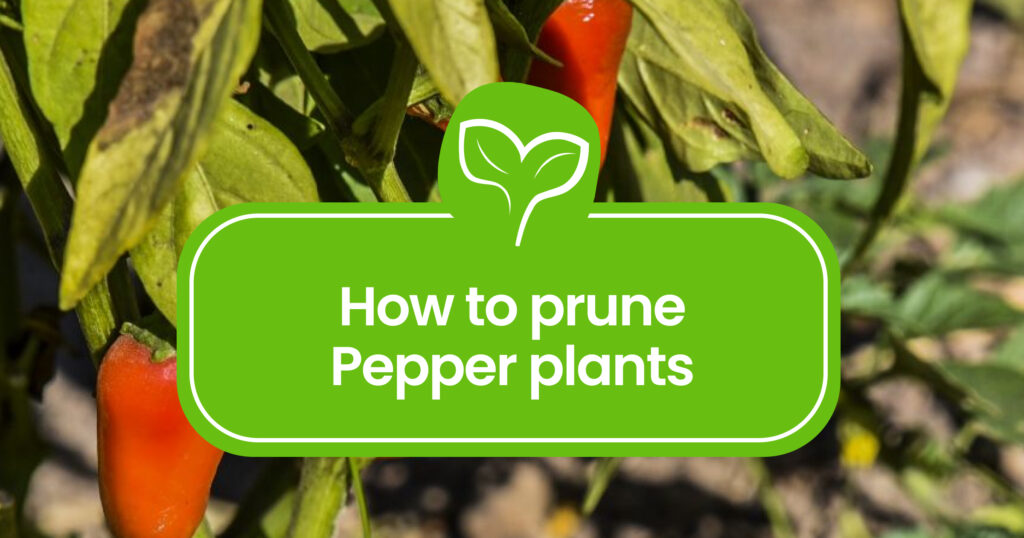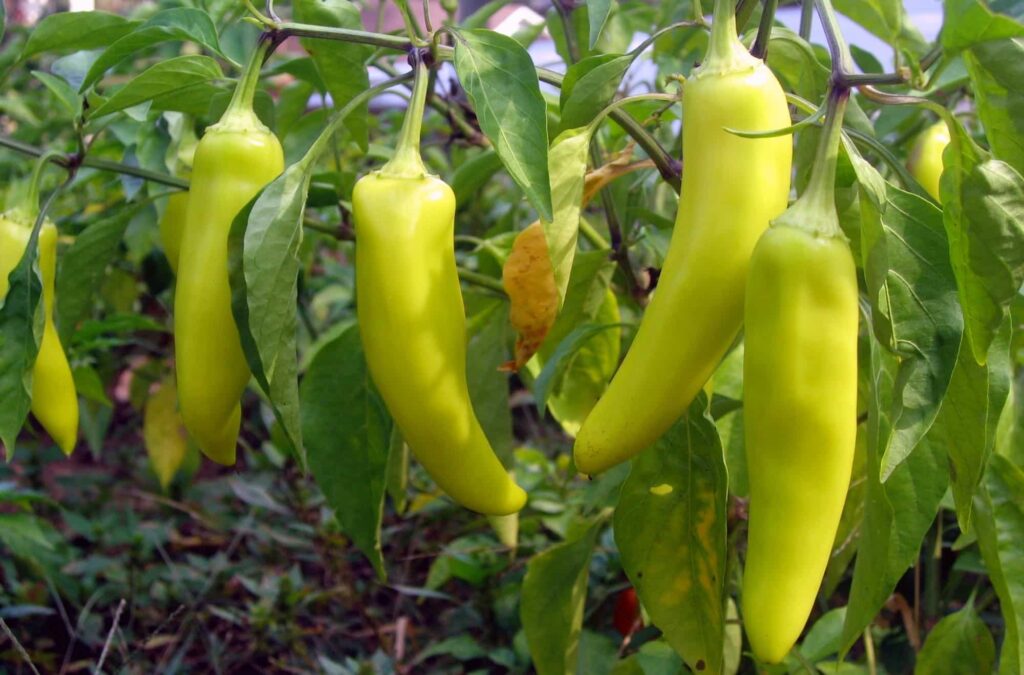
Some gardeners swear by pepper pruning – others don’t see a need for it. While peppers can grow without it, pruning can benefit them and result in richer harvests.
Want to learn everything you should know about peppers and the benefits of pruning? We’ll give you a detailed guide on how to prune pepper plants right here!
Pepper pruning basics
Pruning has many benefits for pepper plants. However, there are several methods you may want to consider for your plant depending on the plant variety and desired outcome.
The techniques you should know are pinching or cutting off the top of the plant, removing the suckers, and thinning – each has different benefits. Cutting the top part of the plant promotes lateral branching, which results in more flowering sites. Suckering redirects the plant’s energy to developing fruits. Thinning allows the plant to have a good flow of air and nutrients.
Determined pepper plants win from removing the tops and suckering, while undetermined varieties benefit from selective pruning and thinning.
Pepper growth stages – when to prune?

Peppers go through several stages over their lifetime. Here is a list of them and everything you should know
- Seedling stage: An early stage of peppers happens after the plant has germinated. You can tell your pepper is a seedling when it grows its first pair of true leaves – true leaves are the pair of leaves peppers that grow after its first pair of seed leaves.
- Vegetative stage: Pepper plants develop established root systems. They grow in size as stem and leaf development is enhanced. Pinch off the tops of the plant during this stage to encourage lateral branching.
- Flowering stage: An essential stage for fruit production as the plants produce buds and blossoms. Cut off early blooms so the plant can use its energy for more growth – this will improve the quality of later fruiting.
- Fruiting stage: Peppers will start to form from flowers. The fruit grows until it reaches maturity. Cut a few inches off the plant 4 weeks before the first frost – it’ll help the plant to focus on ripening the last remaining fruits before the frost can damage them.
Peppers don’t need pruning during each stage. There are some factors to consider when thinking of pruning the plant. Only prune healthy and active plants. Avoid pruning in extreme weather conditions. And check for the habits and preferences of your specific pepper variety.
The tools you need
You won’t need much to prune your peppers.
- Pruning shears/bypass pruners – Use hand pruners for precise cuts on small to medium-sized branches.
- Loppers – Loppers have larger cutting blades and longer handles, making them useful for thicker branches.
- Gloves – You should wear gloves whether you’re pruning peppers, basil, or pothos. Gardening gloves protect your hands from any damage during the pruning process.
- Rubbing alcohol or other sterilization solutions – Don’t forget to clean your tools before using them!
How to prune pepper plants – a step-by-step guide
The exact pruning steps you need to take to promote growth and achieve a rich harvest depends on when you’re pruning your pepper plant. Here’s what to do when pruning early in the season.
- Remove any damaged parts of your pepper. The plants generally don’t have damaged or dead branches that early in their growth.
- Remove the top part of the plant – pinch or cut off around an inch of the branches. It encourages lateral branching and a bushier appearance.
- Cut off side shoots and suckers as they emerge.
Mid-season pruning helps to keep the plant in an optimal state for rich blooms.
- Regularly monitor the plant and cut off any unhealthy branches as they appear.
- Apply selective pruning to promote air circulation and light penetration. Remove branches and leaves from overgrown areas and cut off stems growing inward.
- Remove the lower leaves near the ground – it protects the plant from pests.
Late-season pepper pruning can enhance the quality of your fruits.
- Remove the leaves around ripening pepper fruits.
- Cut the whole plant back four weeks before the first frost. Cutting off the top of the plant will force the plant to direct its energy to ripen the existing fruits.
How to care for peppers after pruning?
Post-pruning care is essential for peppers to recover from the stress of pruning and to achieve maximized yields. So, how do you care for pepper plants?
Ensure that the soil stays evenly moist. However, you want to avoid over-watering. A balanced fertilizer for vegetables benefits peppers by providing them with added nutrients. Stakes are handy for additional support – you may want to use them for large and fruit-bearing plants.
And, of course, regularly monitor your peppers. Doing that helps you to notice when any adjustments in care are needed. It also helps to prevent pests and diseases.
Pruning for different pepper varieties

Peppers come in many varieties, such as bell peppers, jalapenos, cayenne peppers, and piri piri.
While they come from the same family, their characteristics and growth habits vary. That explains why different pruning methods can benefit some varieties more than others – for example, bell peppers don’t require much pruning, but banana peppers benefit from more severe pruning thanks to their vigorous growth.
Have a good understanding of different pruning methods and look up the recommended technique for your specific variety. Adapting the pruning practices depending on the variety will maximize your yields no matter which sort of pepper you’re growing.
Mistakes to avoid when pruning peppers
People make two common mistakes when pruning plants – over-pruning and pruning at the wrong time.
- Avoid going over the top by pruning lightly and gradually removing more branches as needed. You can’t undo over-pruning, and it can take your peppers a long time to recover from it.
- Peppers can be pruned during early and late seasons, but there are some things to be aware of. Allow the plants to grow 6-8 inches tall before pruning. The last pruning should happen a few weeks before the first frost – there is no point in pruning peppers after that.
- And last but not least, remember to keep your tools clean and sharp when pruning! You want to avoid messy cuts and the possible spread of diseases.
To sum it up
It isn’t necessary to prune peppers. However, doing it can benefit the plant and maximize its yield. If you want a perfect harvest of peppers, try out the tips and tricks found in this article!
Frequently Asked Questions
The short answer is no – pruning peppers isn’t necessary. However, it is recommended as it’s very beneficial for the plants.
Should I remove the lower leaves on pepper plants?
Remove the lower leaves when pruning your peppers. Doing so enhances air circulation and works as a pest control.
How to prune pepper plants for maximum yield?
You can promote your pepper yields by pinching or cutting off the top of the plant, removing suckers and side shoots, and regularly cutting off damaged branches. Selective pruning promotes the overall health of peppers, resulting in rich harvests.
How tall should pepper plants be before flowering?
Pepper plants generally start flowering once they reach a height of 8 to 12 inches. However, it can vary depending on the pepper variety, the age and the condition of the plant, and its environment.
Where do you pinch peppers?
Pinching is a great technique for pruning pepper suckers. Ensure your hands are clean, and pinch the peppers from the base.
How do you make peppers bushy?
Prune the top of the plant to promote lateral branching to make your pepper plant bushier. Selective pruning at the lower leaves and supporting the plant also help to achieve a fuller appearance.
